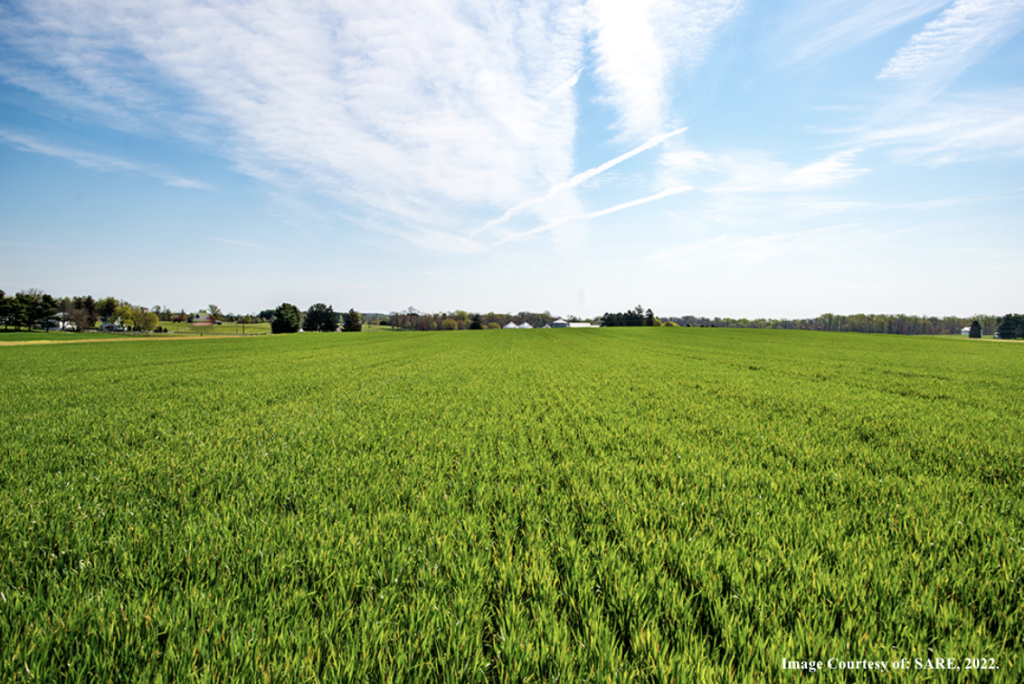Plants help combat soil erosion due to their extensive root systems that hold the soil together and support nutrient exchange (The Role of Soil Microorganisms in Plant Mineral Nutrition—Current Knowledge and Future Directions, 2017). Additionally, roots can absorb the excess water from runoff that causes erosion, and vegetation acts as a buffer to the strong wind that can blow topsoil away. Established vegetation is crucial for controlling erosion. Materials like leaves and wood from vegetation add to the organic matter within the soil and help absorb the impact of rain (Horton, 2020). Therefore, soil erosion can be largely combated with increasing vegetation. From an agricultural perspective, cover crops and crop rotation are the major methods for preventing soil erosion with plants.

Cover Crops
Cover crops can be defined as plants that shield soil from erosion, thus improving soil health and nutrients. Furthermore, cover crops increase biodiversity above ground and within the soil (Clark, n.d.). Some examples of cover crops include the following: grasses, rye, wheat, buckwheat, red clover, and many more. The usage of these cover crops increases the moisture-holding capacity of soil to prevent water erosion. Furthermore, the consistent coverage of soil leads to better soil structure and profile because of the presence of roots (Horton, 2020).

Diverse Crop Rotations
Diversifying crop rotations can help soil maintain nutrients and therefore prevent erosion. This works by keeping the soil undisturbed and covered, which in turn reduces the need for toxic pesticides (Marquardt & Schultz, 2017). Soil health declines when crops are not diversified because diseases or pests can build within the organic matter of the soil.

According to Sustainable Agriculture Research and Education, most crops should be rotated at least every three to four years to increase the health of the soil and build organic matter.